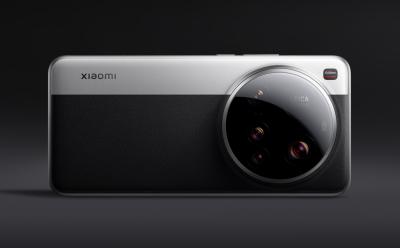The Xiaomi 15 Ultra has arrived on the global stage, delivering a high-end flagship experience that leans on a familiar design language while pushing forward with the kind of camera prowess and performance Xiaomi enthusiasts expect. Unveiled at MWC 2025, this device aims to expand on last year’s Ultra model with incremental design tweaks, a potent hardware package, and a sophisticated imaging stack that positions it as one of the strongest contenders in the premium smartphone market.
Overview and design
Xiaomi’s new flagship visually nods to the immediately preceding generation, echoing the rectangular back and the large circular camera housing that defined the previous Ultra. This intentional continuity signals a confidence in a familiar silhouette that users have come to associate with the Ultra line. The 6.73-inch LTPO AMOLED display remains a centerpiece of the device, continuing with a 1440p resolution and a 120Hz refresh rate, ensuring smooth visuals in everything from scrolling to gaming. The display supports a broad color depth, described as 10+2 bit color, which translates to a wide color gamut and nuanced gradations in photographs, videos, and UI elements. Peak brightness is touted up to 3,200 nits, offering legible content even under bright daylight conditions, while the bezels have been refined to be slightly thinner, contributing to a more immersive front fascia without sacrificing grip or ergonomics.
Three color options anchor the launch: classic black and white, plus a Leica camera edition that uses an eco-leather back for a premium tactile feel and a distinct aesthetic differentiation. The Leica edition underscores Xiaomi’s collaboration with Leica, a pairing that has historically influenced the camera design ethos and branding, even as it preserves the core engineering and software framework of the standard models. The device retains IP certification and Gorilla Glass protection, specifically Gorilla Glass 7i around its camera housing, which provides an added layer of resilience for the sensitive imaging elements. The build quality is reinforced by an emphasis on durability without compromising the refined, premium feel users associate with a flagship Xiaomi smartphone.
From a hardware standpoint, the Xiaomi 15 Ultra carries forward the dual-channel Ice Loop cooling system, a hallmark of Xiaomi’s approach to maintaining sustained performance during intensive tasks. The emphasis on thermal management is not only about peak performance on synthetic tests but about real-world use—prolonged gaming sessions, high-resolution video capture, and heavy multitasking—where thermal throttling can otherwise dampen the user experience. The device runs HyperOS 2.0, which is based on Android 15, aligning with recent Android ecosystem updates and bringing Xiaomi’s software enhancements to the fore. A promise of four years of major software updates offers a future-proofing angle that is particularly relevant for flagship devices in 2025, signaling Xiaomi’s commitment to long-term software support.
The camera module is a visual and functional centerpiece, described as a stacked camera arrangement that combines multiple high-resolution sensors to deliver a broad range of focal lengths and shooting modes. The core imaging cluster includes a 50MP Sony LYT 900 main sensor, a 50MP telephoto shooter with a 70mm equivalent focal length and optical image stabilization (OIS), and a 50MP ultrawide sensor with a 115-degree field of view. In addition to this triple 50MP array, Xiaomi has integrated a high-resolution 200MP Samsung HP9 main sensor, paired with an 8.6x100mm periscope lens that also includes OIS. The combination is designed to offer versatility across everyday photography, long-range telephoto work, and wide-angle scenes, with the periscope system enabling substantial reach while maintaining image sharpness and detail.
The front-facing camera is a 32MP sensor with an f/2.0 aperture, designed to deliver clean, high-resolution selfies and support for video calls with clarity. While the lineup includes substantial flagship-grade hardware, there is a noted adjustment: the variable aperture on the main lens has been downgraded to a fixed aperture on the 15 Ultra. This design choice is likely tied to optimizing consistency in image quality—particularly in challenging lighting—across the disparate shooting scenarios the camera system is designed to handle.
In terms of software and imaging processing, the phone introduces AISP 2.0 processing, Xiaomi’s advanced AI-driven image signal processing. This technology is positioned as giving the device a distinct advantage in nighttime photography, optimizing detail, noise suppression, and color rendition in low-light conditions. The camera stack is complemented by a robust set of lenses and sensors designed to cover a wide spectrum of photographic needs, including high-resolution stills and flexible zoom capabilities, while the overhauled processing pipeline aims to deliver better low-light performance and more natural color science.
The external hardware remains practical for power users: a battery setup with a distinct regional difference—6,000 mAh in the Chinese market and a 5,400 mAh cell for the global variant. Charging options are strong, with 90W wired fast charging and 80W wireless charging, covering a broad range of charging scenarios to minimize downtime. Connectivity and data transfer are supported by a USB 3.2 Gen 2 port, ensuring fast wired data rates for accessories and fast charging. The phone is built to endure everyday use with IP68/69 certification, offering water and dust resistance, and the camera assembly is protected with Gorilla Glass 7i to mitigate scratches and impact in everyday handling. The design and feature set reflect Xiaomi’s intent to deliver a flagship that is both aesthetically premium and functionally formidable, with a focus on imaging capabilities that set it apart in the crowded high-end market.
This launch cements the Xiaomi 15 Ultra as a direct continuation of the Ultra lineage, with refinements in design, hardware, and software that collectively push the device into a competitive position among 2025 flagship smartphones. The Leica edition adds a distinctive flavor and tactile premium experience for enthusiasts who value the heritage of Leica collaborations, while the standard editions emphasize performance, software support, and imaging versatility. The dusting of classic camera aesthetics—paired with the modern, software-driven imaging stack—appeals to users who want a device that marries a retro-inspired look with cutting-edge technology.
Design language and materials
The choice of a dual-tone, camera-centric rear design nods to vintage handheld cameras, translating a familiar aesthetic into a contemporary smartphone silhouette. The back surface on most models remains flat with the prominent circular camera housing serving as a focal point. The Leica edition’s eco-leather back provides a tactile contrast to the glass builds used in the standard variants, highlighting the premium tier of the Leica collaboration. This material choice not only differentiates the Leica variant visually but also enhances grip and handfeel, which can influence the overall user experience when handling a device of this size and heft.
Display, ergonomics, and durability
The display remains a flagship-grade LTPO OLED panel with adaptive refresh capabilities, ensuring smooth transitions and efficient power use. The combination of 6.73 inches and a high-brightness output helps the device remain usable in outdoor conditions while maintaining a compact form factor for a device of this class. The slightly thinner bezels contribute to a more immersive visual experience, and the overall weight distribution is designed to balance the tall, wide form with comfortable one-handed use where possible. Durability is reinforced by IP rating and protective glass around the camera module, complemented by Gorilla Glass protection to shield key surfaces from everyday wear and tear.
Performance, hardware, and software
The Xiaomi 15 Ultra focuses on delivering flagship performance through a robust hardware stack and a software environment tuned for speed, efficiency, and advanced imaging. The phone is powered by the Snapdragon 8 Elite platform, a configuration that suggests top-tier performance benchmarks and competitive real-world performance across gaming, multitasking, and heavy workloads. Configurations offer 12GB or 16GB of LPDDR5X RAM and up to 1TB of UFD 4.0 storage, providing ample headroom for demanding applications, large photo and video libraries, and expansive game libraries. The combination of high-speed RAM and fast storage is designed to minimize loading times, improve app switching, and support high-resolution media capture and editing workflows.
To keep this performance sustainable, Xiaomi has implemented a dual-channel Ice Loop cooling system, highlighting the company’s ongoing emphasis on thermals for sustained peak operation. Long sessions of graphics-intensive gaming, 8K video editing, or continuous high-rate shooting can generate significant heat, potentially throttling performance or affecting battery life. The cooling system is intended to dissipate heat efficiently, maintaining performance consistency and avoiding thermal throttling. This is particularly relevant given the camera and AI processing load, which can demand a lot of CPU/GPU resources over extended periods.
Software-wise, HyperOS 2.0 based on Android 15 provides a modern software foundation with a mix of Xiaomi-specific features and optimizations. The promise of four years of major software updates demonstrates a commitment to long-term support, which is increasingly important for flagship devices in a market where software longevity contributes to perceived value. The AISP 2.0 processing is a notable software feature, intended to enhance imaging performance in challenging lighting conditions by leveraging advanced AI-driven ISP capabilities. This processing approach is positioned as a differentiator that could yield improved detail, color accuracy, and noise control in photographs taken at night or in mixed lighting.
The device also incorporates a comprehensive set of connectivity and sensor features common to high-end flagships, including robust wireless connectivity, high-capacity fast charging, and modern charging standards. The 90W wired charging and 80W wireless charging options reduce downtime between shooting sessions, video recording, or gaming, enabling rapid return to full power. In the software domain, HyperOS 2.0 emphasizes a clean user experience with a focus on performance, customization, and camera-centric features designed to maximize the capabilities of the hardware.
AI processing and imaging pipeline
The AISP 2.0 processing is positioned as a core differentiator for nighttime photography and general imaging performance. By optimizing sensor data and applying intelligent processing across multiple camera modules, the phone aims to deliver improved low-light detail, dynamic range, and color fidelity. The imaging pipeline is designed to support a stacked camera array, enabling seamless switching between lenses (main, telephoto, ultrawide, and periscope) while maintaining consistent color and exposure across focal lengths. This is particularly important for users who expect professional-grade results from a smartphone, including those who shoot in mixed lighting, dynamic scenes, or fast action sequences.
Battery, charging, and durability
Battery configuration varies by region—6,000 mAh in the Chinese market and 5,400 mAh for global variants—reflecting regional considerations such as carrier policies, thermal design, or regulatory requirements. Regardless of the region, the device supports high-power charging, with 90W wired charging delivering rapid replenishment, and 80W wireless charging offering convenient cable-free charging when a dock or compatible stand is available. The USB 3.2 Gen 2 port enables fast data transfer and compatibility with high-speed accessories, supporting the broader ecosystem of peripherals and storage devices that enthusiasts often rely on for photography workflows and media consumption. The build includes an IP68/69 rating, further evidence of Xiaomi’s emphasis on durability, which is important for a device that is likely to be used for extended shooting sessions in various environments. The camera modules are protected by Gorilla Glass 7i, a protective glass layer intended to minimize scuffs and scratches to preserve image quality and ensure that the sensor stack remains intact over time.
Camera system and imaging capabilities
The Xiaomi 15 Ultra’s camera architecture is a centerpiece of its flagship proposition, delivering a robust array of sensors designed to capture high-quality imagery across a broad range of scenarios. The system is described as a stacked ensemble, with a 50MP Sony LYT 900 main sensor forming the imaging bedrock. The main sensor is designed to deliver high-resolution stills with strong color fidelity, detail retention, and dynamic range, particularly when paired with the advanced processing introduced in AISP 2.0. The telephoto component is a dedicated 50MP sensor with a 70mm equivalent focal length and optical image stabilization, enabling sharp long-distance shots with reduced motion blur—an essential feature for portrait work and distant landscapes alike. The ultrawide sensor is also 50MP, featuring a wide 115-degree field of view to capture expansive scenes and unique perspectives that complement the longer focal lengths.
A standout element is the 200MP Samsung HP9 sensor, coupled with an 8.6x100mm periscope lens and OIS. This combination is designed to deliver high-resolution detail from longer distances, supporting dramatic compression and intricate textures in distant subjects. The periscope design expands the device’s reach without requiring a physically large camera module, a practical approach for maintaining a slim profile while achieving substantial zoom. The multi-sensor approach, combined with the periscope telephoto, is aimed at offering flexibility across everyday photography, travel, street scenes, and social media content creation.
One notable change versus the prior generation is the main lens’s variable aperture capability has been downgraded to a fixed aperture on the 15 Ultra. While a variable aperture can provide more flexible exposure control across lighting conditions, a fixed aperture paired with enhanced night processing and AI-driven ISP optimization can yield more consistent results, especially in complex lighting environments where exposure decisions are difficult to manage in real-time. Xiaomi has highlighted its AISP 2.0 processing as a key factor in nighttime photography, suggesting that improved noise reduction, detail preservation, and color accuracy will help offset any limitations from the fixed baseline aperture.
Front-facing imaging is handled by a 32MP selfie camera with an f/2.0 aperture, designed to deliver high-resolution self-portraits and high-quality video calls. The emphasis on front-camera quality aligns with a broader industry trend toward sophisticated portrait modes and reliable performance in social and video-centric workflows.
In terms of color science and overall imaging performance, the combination of Sony and Samsung sensors, coupled with Xiaomi’s imaging software, seeks to offer a balanced, flexible system capable of producing natural skin tones, vibrant landscapes, and detailed textures in a variety of lighting scenarios. The inclusion of an advanced night photography processing pipeline positions the 15 Ultra as a strong option for users who frequently shoot in low-light environments, including urban nightscapes and interiors.
Zoom and focal-length versatility
With a 70mm telephoto lens and a 8.6x100mm periscope configuration, the 15 Ultra targets both portrait work and distant scenes with high fidelity. The periscope mechanism enables substantial optical magnification without compromising image sharpness, a key advantage for users who value long-range detail in handheld photography. The tenets of this camera stack align with premium smartphone imaging expectations, delivering crisp, detailed captures across focal lengths, while the AI-driven processing aims to maintain consistent color, exposure, and noise behavior across the sensor suite.
Display, battery, connectivity, and build
The Xiaomi 15 Ultra features a high-end display designed to deliver clarity, color accuracy, and smooth interaction. The LTPO OLED panel supports a 120Hz refresh rate and a resolution of 6.73 inches, with 1440p clarity that remains crisp at typical viewing distances. The 10+2 bit color depth promises rich color representation with nuanced transitions that are especially noticeable in gradients and skin tones. The brightness spec—up to 3,200 nits—ensures legibility in bright outdoor conditions, while refined bezels contribute to a more immersive viewing experience without compromising the device’s ergonomics. The display benefits from Xiaomi’s image processing and software optimizations, which are designed to balance color accuracy with vibrant rendering for media consumption and content creation.
Battery life is region-dependent, with the Chinese variant featuring a 6,000 mAh capacity and the global model offering a 5,400 mAh cell. Both configurations support rapid charging—90W wired and 80W wireless—costing minimal downtime and enabling rapid restarts in the middle of a photo or video shoot. The USB 3.2 Gen 2 port offers fast data transfer, an important feature for users who frequently offload high-resolution media or connect high-speed peripherals. The device’s IP68/69 rating ensures a degree of protection against water and dust, supporting daily wear and tear and more challenging use cases in outdoor environments. The chosen protective materials and coatings, including Gorilla Glass 7i around the camera module, help protect the device from common hazards that can impact imaging quality and device longevity.
From a software perspective, HyperOS 2.0 on Android 15 brings a contemporary experience with a focus on performance, user customization, and camera-oriented features. The four-year major software update promise provides reassurance to users who plan to keep their devices for several years, ensuring access to new features, security updates, and improvements aligned with evolving apps and services. The imaging pipeline, powered by AISP 2.0, is designed to optimize the interaction between hardware sensors and software, helping to realize the camera system’s full potential across different lighting conditions and shooting modes. The result is a flagship device that aims to deliver top-tier performance and imaging capabilities with a software foundation designed for longevity.
Availability and colorways
Retail availability includes three color options, with the Leica edition offering a distinct eco-leather back and a unique aesthetic treatment that appeals to enthusiasts seeking a premium, camera-centric variant. The standard black and white variants provide a more understated, modern look that suits a wide range of preferences and use cases. In Europe, the base model with 16GB RAM and 512GB storage is priced at €1,499, reflecting its flagship status and the premium hardware and software package it carries. In addition to the core hardware, Xiaomi is offering value-added services with these devices, including out-of-warranty repair with no labor costs, free screen replacement, and an international warranty program that broadens support for users who travel or live across multiple regions. These services are designed to soften the total cost of ownership for a flagship device and add tangible value for consumers who want long-term assurance alongside premium hardware.
The global launch at MWC 2025 is positioned to bring Xiaomi’s flagship experience to a broad audience, with a focus on Europe and other key markets that have historically been receptive to high-end Xiaomi devices. Availability details suggest a measured rollout across major retailers and network partners, with pricing and storage configurations aligned to regional market expectations. The Leica edition and eco-leather back variant serve as a premium tier that will appeal to photography enthusiasts and collectors who value the fusion of design heritage and camera performance. It remains to be seen how the global market responds to the new Ultra lineup, but the combination of a top-tier camera array, powerful internals, and long-term software support is well-aligned with current consumer expectations in the premium smartphone category.
Pricing and availability
The Xiaomi 15 Ultra arrives in Europe with three color options—classic black, classic white, and the Leica camera edition that features an eco-leather back for a premium feel and aesthetic differentiation. The base configuration for the European market is priced at €1,499 for the 16GB RAM and 512GB storage variant, signaling Xiaomi’s intention to position the device firmly in the premium tier of the market. As part of the device’s value proposition, Xiaomi is offering practical post-purchase support and protection: out-of-warranty repair without labor charges, a free screen replacement, and an International warranty program. This combination of premium hardware, software support, and value-added services is designed to appeal to a range of users from professionals who rely on top-tier imaging capabilities to premium enthusiasts who want a device that offers longevity and service reliability.
The global availability announcement confirms that the Xiaomi 15 Ultra will reach a broad audience beyond Europe, with the Leica edition and eco-leather variants expected to capture attention among buyers who place a premium on build quality and brand collaborations. The three-color approach—black, white, and Leica edition—gives buyers clear choices that match different style preferences while maintaining the same core hardware specification and software stack. The Leica edition’s eco-leather back adds a tactile dimension to the device, complementing the camera-centric proposition with a luxurious, hand-feel element that differentiates it from the standard glass back variants. For consumers evaluating trade-offs between form and function, the 15 Ultra offers a robust package with a compelling price point for its class, along with the assurance of long-term software support and a comprehensive after-sales program that includes free screen replacement and international warranty.
The camera capabilities, processing power, and software longevity combine to present a compelling argument for the Xiaomi 15 Ultra as a flagship that competes with established premium devices in the market. The pricing and availability details, while anchored by the European €1,499 starting point for the base model, indicate a broader strategy to position the device as a top-tier option for discerning buyers who demand cutting-edge hardware, advanced imaging performance, and premium craftsmanship. The combination of a multi-sensor camera stack, high-speed storage, generous RAM, a refined display, and long-term software support makes the Xiaomi 15 Ultra a strong candidate for those who want a device capable of elite performance in photography, video recording, gaming, and day-to-day usage.
Conclusion
The Xiaomi 15 Ultra represents a bold continuation of Xiaomi’s flagship ambitions, marrying a recognizable design language with a comprehensive, forward-looking hardware and software package. With a large, high-brightness display, a multi-sensor camera array led by a 50MP main sensor and a 200MP high-resolution capture capability, and a periscope telephoto system designed for long-range imaging, the 15 Ultra aims to deliver standout performance across a wide spectrum of photographic and video tasks. The inclusion of a powerful cooling system, a high-refresh-rate display, and a software ecosystem built around Android 15 and HyperOS 2.0, combined with a four-year software update promise, reinforces Xiaomi’s commitment to delivering a true flagship experience that remains relevant for years.
The Leica edition and eco-leather variant add a premium option for enthusiasts seeking a more tactile and exclusive feel, while the standard black and white variants provide broad accessibility. Pricing in Europe begins at €1,499 for the 16+512GB configuration, a price point that places the device squarely in the premium tier, accompanied by a robust after-sales package that includes free screen replacement, labor-free out-of-warranty repairs, and international warranty coverage. Availability across Europe and the broader global market signals Xiaomi’s intent to compete aggressively in the flagship segment, leveraging advanced imaging capabilities, long-term software support, and a comprehensive service plan to attract power users and photography enthusiasts who demand top-tier performance and reliability.
In summary, the Xiaomi 15 Ultra brings together a refined design, cutting-edge performance, and a sophisticated camera system in a package that aligns with the expectations of a modern flagship. Its combination of hardware power, AI-driven imaging processing, durable build, and thoughtful software support positions it as a compelling option for those seeking a premium smartphone with serious imaging capabilities and long-term value. The launch at MWC 2025 marks a formal global introduction that should spur ongoing conversations about Xiaomi’s strategy in the high-end smartphone landscape, as more users explore how the 15 Ultra stacks up against other premium devices in real-world scenarios, including photography sessions, daily use, and immersive multimedia experiences.



